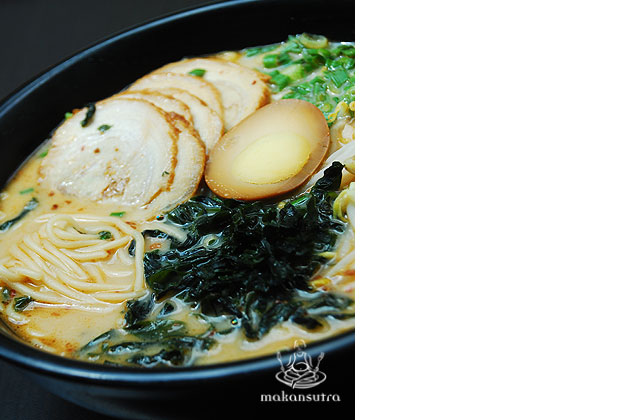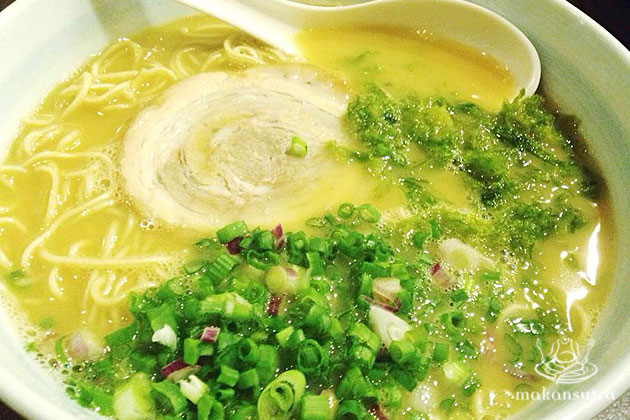
Ramen In Singapore: Losing the Ra-Ra for it
By Adeline Ang - Wednesday, Dec 17, 2014
With at least three ramen stores situated in the area surrounding Tanjong Pagar Plaza, it is near impossible to deny Singaporeans’ (especially Generation Y) love for and access to ramen. Sure, with the springy noodles and rich, clear/cloudy soup, what’s there not to love about, right? This Gen Y will revel in 140 online social media characters on just what’s not to love about ramen in Singapore. Every single time, like a repeat groove on an old record turntable. But something is amiss.

Firstly, this is a Japanese dish with Chinese origins- where wheat noodles can be paired with four broth bases: Shio (salt), Shoyu (soya sauce), Miso and Tonkotsu (pork) with the last being the most popular broth. The dish is topped with charsiew, kakumi (simmered pork belly) or seafood depending on the type of broth. Boiled eggs, scallions, corn, seaweed and stir-fried vegetables are also common ramen toppings. Light flavored soups can be paired with any type of ramen noodle while thinner noodles usually accompany heavier based broths such as Tonkotsu soup-based ramen.

Now, let’s get on with the disappointments. After a little coffee talk with other fellow trusted Gen Y foodies, our top gripe is…the overall saltiness of the broth, and we don’t mean umami saltiness, just plain Jane sodium high. Be it miso or Tonkotsu, its saltiness often leave diners the impression of a MSG/salt overload. Recently, I was dining at a highly raved ramen restaurant that boasts of its clear savory chicken based broth. Although the broth was indeed savory, it was salt-ridden. Also, the slight burning sensation in my throat after several mouthfuls of soup left me feeling a little apprehensive and more than a little thirsty. So much for a clear and savory broth, really.
Not only are ramen broths too salty, they lack uniqueness. In fact, they taste so similar that people would have a lot of trouble trying to differentiate between ramen from a two-time ramen champion from some unknown ramen hawker in some obscure hawker centre. The opaque and cloudy texture that you see in a bowl of Tonkotsu ramen is the result of the long-boiling hours of pork bones. Instead of tasting the aroma of the thick and sticky broth, you end up tasting stock and milk. I kid you not. Seriously, who has the time, and money (on gas), plus patience to do this in our expensive-everything society today?
When we talk ramen noodles, we expect thin and springy noodles. But it gets really disheartening when the noodles used at ramen chains are clumpy and overly thin. To put it bluntly, eat with your eyes closed and it’s as if you’re eating mee kia in milky pork soup.
The toppings of the ramen are of course, equally important. What is disappointing about most of the charsiew is that it is hard and literally tasteless when it is supposed to be simmered or braised in sweetish mirin until it is tender. Why bother with the charsiew in the first place if it turns out inedible? The onsen eggs are equally disappointing. Instead of marinated soft-boiled eggs whose runny yolks are supposed to further richen the broth, we end up with tasteless over boiled ones. Sometimes, it’s like tikam-tikam (luck of the draw)- you won’t know how the egg turns out until it’s ready to be eaten.

Oh, the egg-gony.
Other than being an attempt to entice more customers or to make up for the small-portioned ramen, there is no point in providing free-flow of hard-boiled eggs masquerading as an onsen version. It would be unfair to accuse all ramen restaurants of providing less than tasty and presentable eggs when Keisuke is fully capable of doing so. Then again, what are the odds receiving a well marinated soft-boiled egg with every bowl of ramen?
So it really doesn’t matter if the restaurant produces a weekly menu or if they provide free ramen toppings; similarly, an Instagram-worthy bowl of ramen alone doesn’t make the cut. We Gen Y aren’t all hard-up for freebies, let alone pathetic ones, we just want them to produce the real deal…like how the Tanpopo movie chef studied and perfected it.
We like ramen, but we only come back for good ramen.


